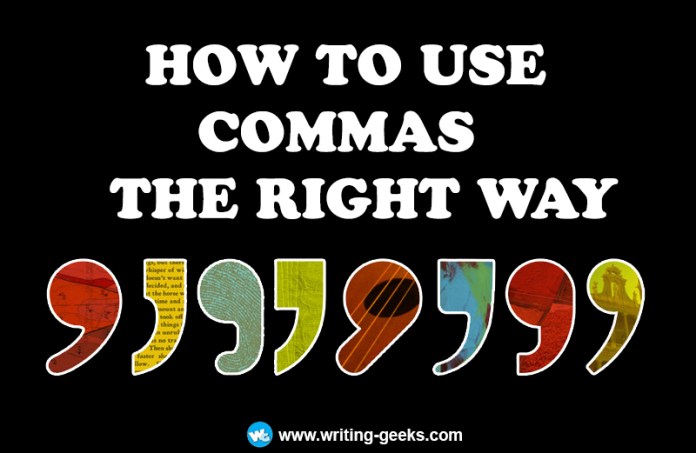How to Use Commas the Right Way
The comma is mostly used, in many languages and contexts, to separate parts of a sentence like clauses, items in lists, and to offset nonessential clauses. As such, the comma is most often misused in writing. The improper use of the comma makes the writer seem uneducated and discredits his or her writings. Below are some of the rules for using commas the right way.
1. Separate the elements in a series
When describing the elements in a list or a series, you have to use a comma to separate each item, including the last two. It is a common misconception that using a comma before the “and” is not necessary. In most cases, this is correct; however, there are some instances when the comma is necessary, for example, when the list is long and complex. If you don’t use a comma in this situation, the last two items might get blurred together. Using a comma between all the items will help you avoid that problem.
2. Set off nonessential clauses
Nonessential clauses are a part of a sentence that can be removed without changing the meaning of it. Another name for these clauses is “added information.” This is the most difficult rule in punctuation because on occasion, it is not clear which part of the sentence is nonessential. Here are some examples of how it’s done.
• Mimi’s ambition, to become a successful author, is within reach.
• Rick, her husband of twenty years, suddenly decided to exercise.
In the examples above, the clauses that are written in italics can be easily omitted from the sentence, for they don’t change the meaning, only add information.
3. Connect two independent clauses
Use a comma and a conjunction to connect two independent clauses. Some writers will omit the comma if the sentence is structured of two, short, balanced independent clauses. Contending that the coordinating conjunction is adequate separation, some writers will leave out the comma in a sentence with short, balanced independent clauses. However, in order to avoid doubting yourself, use the comma for it is always correct. For example:
• “She received good feedback, but she was still disappointed with how her novel turned out.”
One of the most frequent mistakes is using the comma after the coordinating conjunction. While the comma always comes before the conjunction and never after, we might make the mistake while writing, because when we speak, we sometimes pause after the conjunction.
4. Between two or more adjectives that independently modify a noun
The adjectives are functioning independently if when you insert the word “and” between them, you don’t change the meaning of the sentence. That means that the adjectives describe the noun independently from each other, and they should be separated by a comma. Below is an example:
• People should work more on their grammar, and stop destroying our beautiful, versatile language.
There are some word pairs that function together as a single word and there is no need to separate them with a comma. And if done, the comma will change the meaning of the whole sentence. The examples below are both correct grammatically, but they have a different meaning.
• He is a brilliant, young man.
• He is a brilliant young man.
5. Set off quoted elements
This is probably the most difficult rule for the right usage of commas. In general, remember to use a comma to separate the quoted material from the rest of the sentence. Additionally, if there is need of attribution of the quoted element in the middle of the quotation, use a comma, but be careful not to create a comma splice. The right way to do this is shown in the example below:
• “The problem is,” said Alice, “I don’t know whether I should do that.”
Additionally, remember not to use a comma to set off quotes introduced through the word “that” or quoted elements that are a part of a larger structure. As shown in the example below:
• People will often say “Sorry” without meaning it.
There is no need to add a comma after the word “Sorry” because that quoted element is a part of a larger structure (the whole sentence); therefore there is no need for it to be separated with a comma.

